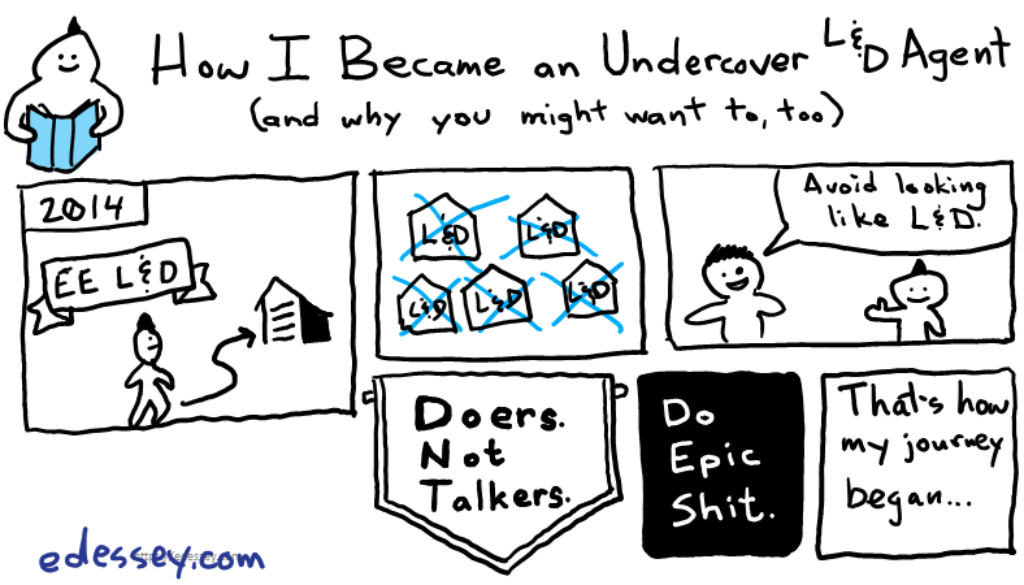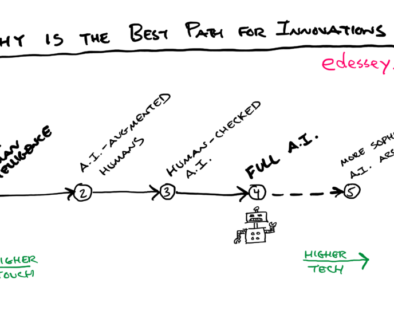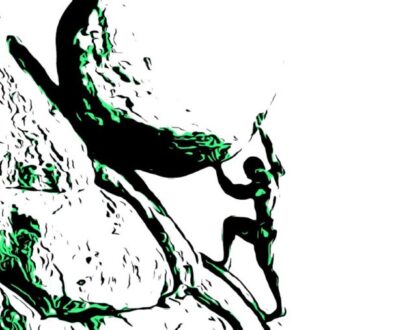How I Became an Undercover Learning Agent
If you’re coming here from Learnapalooza, welcome! If not, here’s the context. Recently, I took the stage as the opening keynote for Learnapalooza 7—a Seattle-based event for learning professionals to gather, exchange ideas about future trends, and meet new people—where I led the attendees in a co-creation exercise to generate the content. In it, I told a few stories and followed many of the new methods that I’ve learned.

The idea to make this an UnKeynote was inspired by an interview with James Clear where he posited that the speakers are the people who learn the most at conferences. So, in an effort to maximize learning, I encouraged the audience to do as much of the speaking as possible.
It was incredible bringing in all that amazing experience of learning professionals from the room, so during the talk I used a red pen to mark up my slides. I recommend comparing the BEFORE to the AFTER to see the experience that they brought into the talk. Both are here for you.
Here are the original materials:
Learnapalooza UnKeynote – FINAL BEFORE.pptx
And here are the materials co-created with the experts in the room:
Learnapalooza UnKeynote – FINAL AFTER.pptx
In 2014, I left Microsoft Engineering Excellence group, where I was researching innovation practices, design thinking, lean startup, and agile practices and training over 20,000 Microsoft employees on those methods. That’s when I left to join The Garage—as an undercover L&D agent—where I am now the Director of Intrapreneurship.
At the time, I transitioned from working in a model of traditional Learning and Development (L&D) to one in which people would learn by doing, following The Garage motto of “Doers. Not Talkers.”
From that experience, here are the main take-aways:

- Whenever taking notes, document to communicate to others as much as possible. That helps you create a lot of artifacts, saves you time, and also helps you learn more.
- Whenever you see someone in love with their own idea, assist them to follow the full process of Prepare -> Diverge -> Analyze -> Converge.
- In any given coaching situation, there are at least three things unknown to the coach–and often to the person or team being coached–referred to as black swans as referred to by Chris Voss in Never Split the Difference. A key trick is to ask questions to uncover these black swans.
- After asking questions, it’s beneficial to use a framework to provide structure and synthesize the results of the questioning back to the answerer.
As a bonus, here’s a framework that I coach for constructing an argument for sponsorship. It is to follow an hourglass shape. Begin with a big vision, then step down to how you will start in a focused way, then share how you can execute in phases from the start to the big vision. This shape, when presented to sponsors, shows that the person seeking sponsorship is both strategic and practical. As a coach, helping a team organize their thoughts into this pattern, gives them a clear view on how to compel a sponsor.

With those 4 take-aways, and a bonus framework, I hope that you can use your superpowers to be an undercover L&D agent.
***
It has been a while since I’ve posted. Mainly because I’ve been heads down generating a ton of content in my job as Director of Intrapreneurship at Microsoft, and coaching lots of teams. There’s a lot of new stuff that I’ve learned that I can start sharing here again with you.



November 4, 2022 @ 6:32 pm
I was fortunate to be in the room during this unkeynote and this is a great summary. It was especially cool to see how you harnessed the wisdom in the room, so thank you for sharing both the before and after versions of your deck. The superpowers exercise at the beginning was fun!